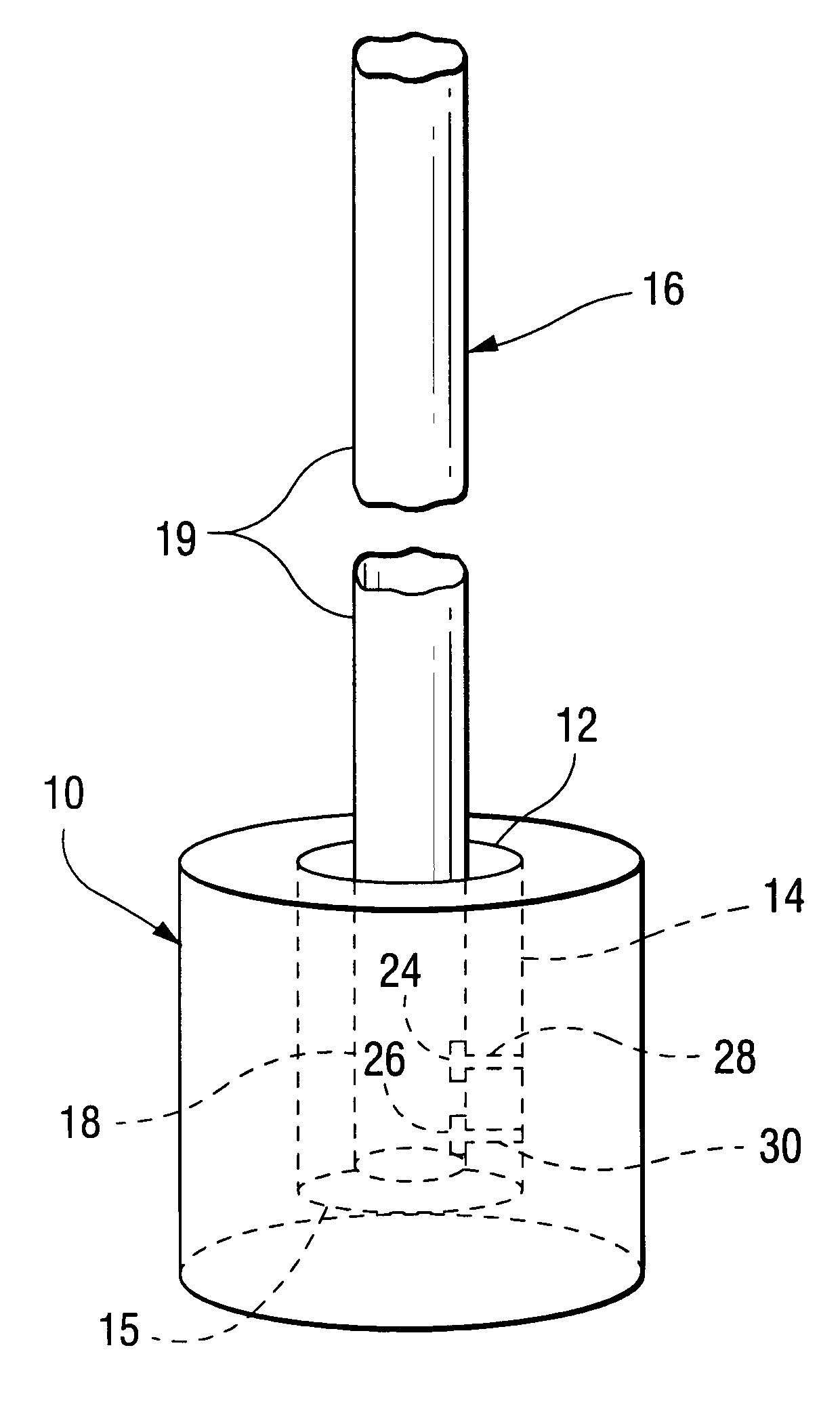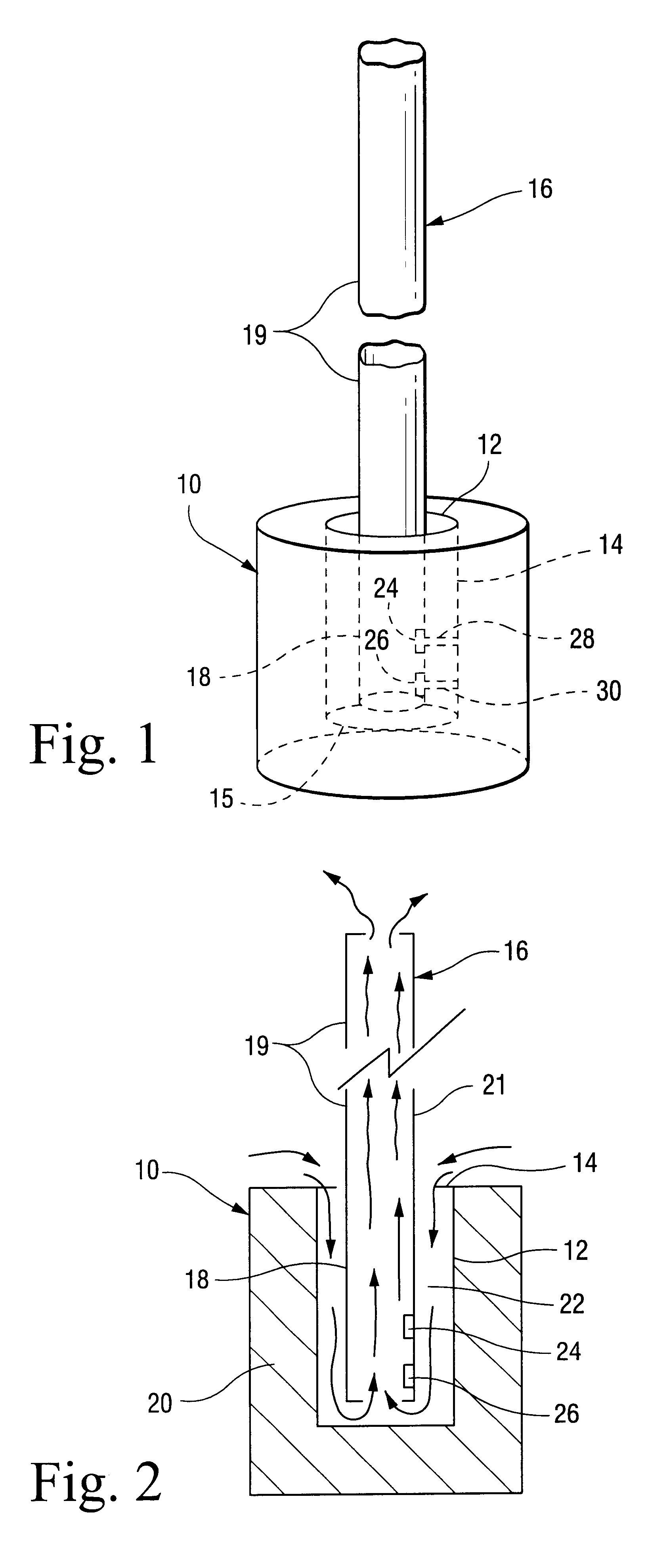Ambient air temperature and/or humidity sensor
a sensor and ambient temperature technology, applied in the field of sensors, can solve the problems of high sensor visible, not always desirable, and inability to maintain accuracy in the presence of strong sunlight, and achieve the effect of accurate recording of ambient temperatur
- Summary
- Abstract
- Description
- Claims
- Application Information
AI Technical Summary
Problems solved by technology
Method used
Image
Examples
Embodiment Construction
The sensor comprises a pot-like outer member 10 made of heat insulative material such as a plastic. The outer member 10 has therein a vertical hole 12 which has an opening 14 at its upper end and a closed lower end 15 as viewed in the drawings. An elongate inner member in the form of a thin-walled tube 16 is provided which has a lower portion 18 positioned in the hole 12 and an upper portion 19 which projects out of the opening 14 and extends above the outer member 10.
The bottom of the lower portion 18 is spaced from the closed lower end 15 of the hole 12. As will be appreciated from the drawings, the outer member 10 has a wall 20 which is considerably thicker than the wall of the tube 16, the tube wall being indicated at 21. At least the upper portion 19 of the tube 16 is metallic, e.g. made of aluminium. The hole 12 and the tube 16 are of circular transverse cross-section and are substantially coaxial so as to define an annular clearance space 22 between them.
The lower portion 18 ...
PUM
| Property | Measurement | Unit |
|---|---|---|
| conductive | aaaaa | aaaaa |
| metallic | aaaaa | aaaaa |
| temperature | aaaaa | aaaaa |
Abstract
Description
Claims
Application Information
 Login to View More
Login to View More - R&D
- Intellectual Property
- Life Sciences
- Materials
- Tech Scout
- Unparalleled Data Quality
- Higher Quality Content
- 60% Fewer Hallucinations
Browse by: Latest US Patents, China's latest patents, Technical Efficacy Thesaurus, Application Domain, Technology Topic, Popular Technical Reports.
© 2025 PatSnap. All rights reserved.Legal|Privacy policy|Modern Slavery Act Transparency Statement|Sitemap|About US| Contact US: help@patsnap.com


